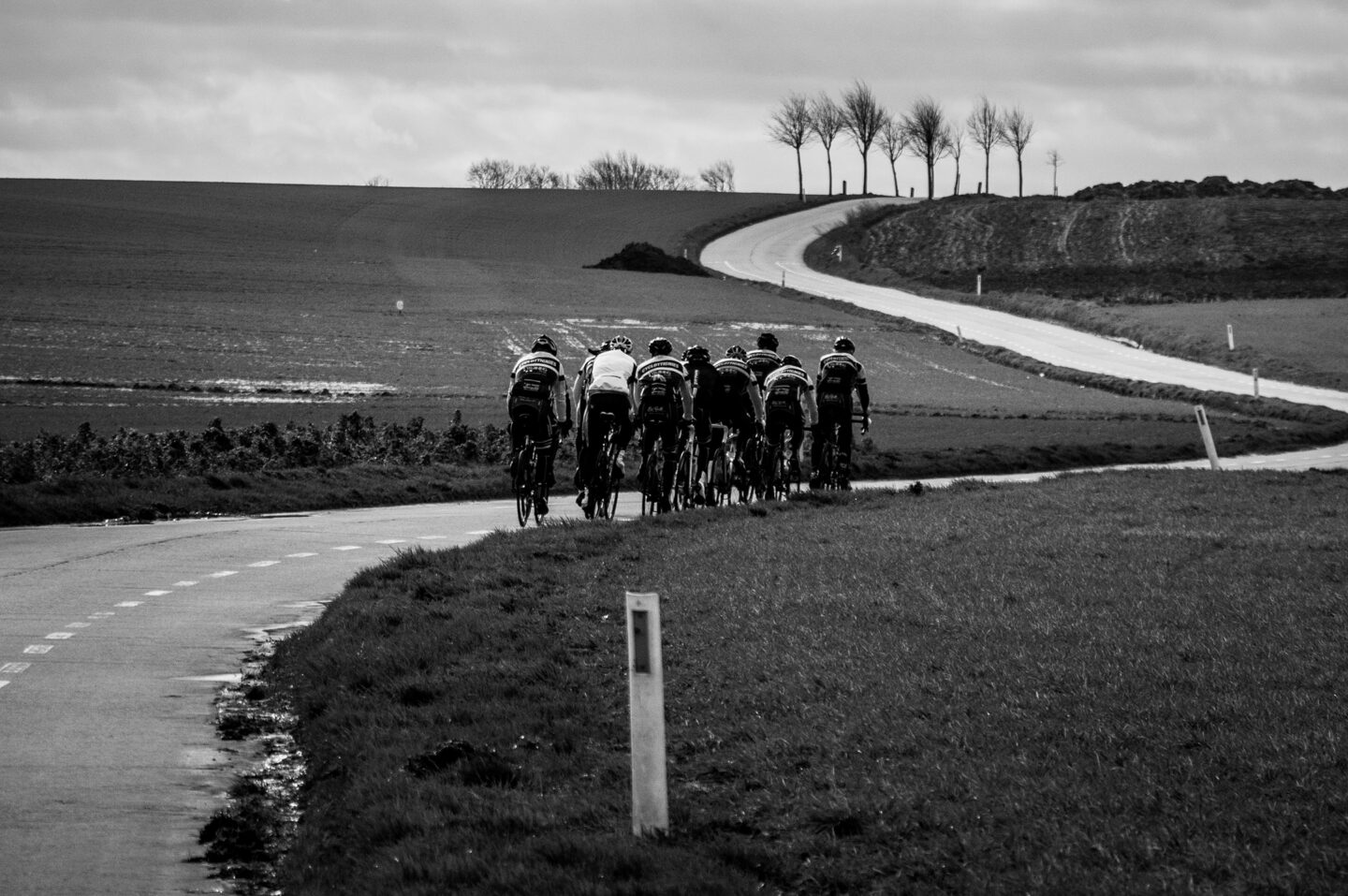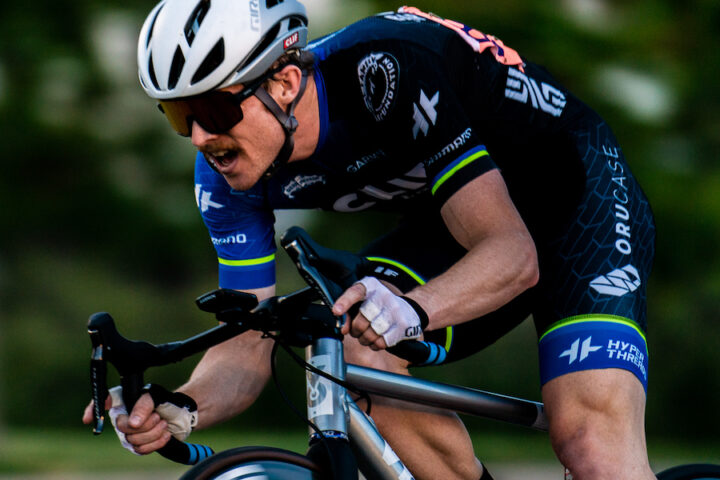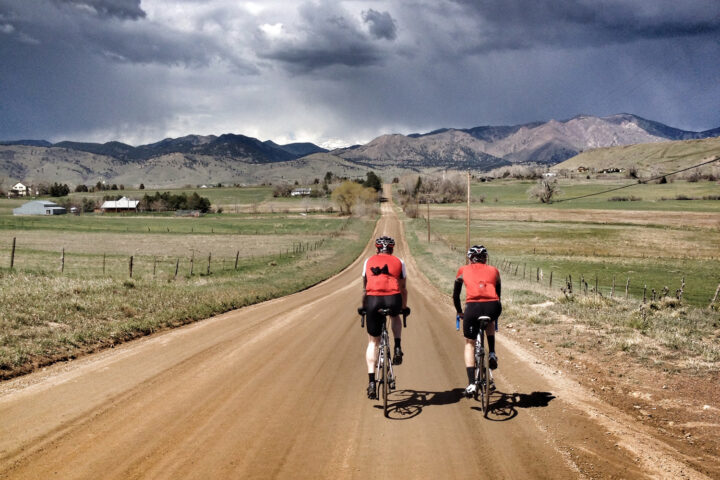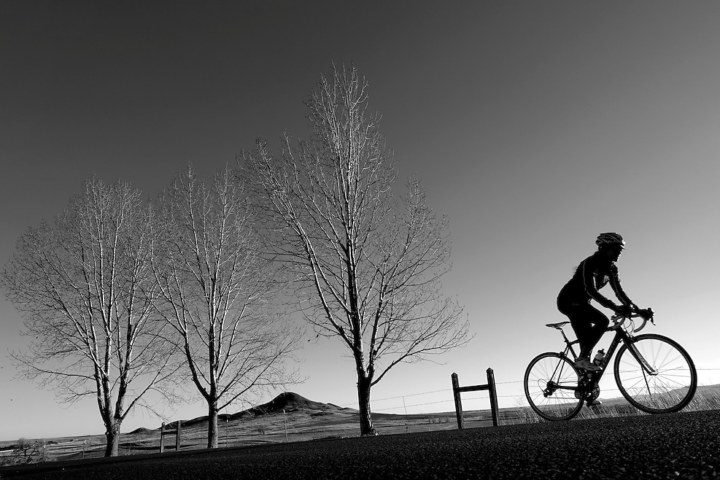It had been a challenging winter. Bad weather and work obligations were cutting into my already limited time to train. Finally on February 14, I resolved to turn my training around. To prove my commitment, I headed into the mountains. I was going to get five hours of riding in—no matter what. Sure enough, the snow started falling soon after I headed out and I quickly found myself four inches deep. I gritted my teeth and reaffirmed my commitment: “No matter what!”
Two seconds later, as if responding to my resolve, a car slid past me nearly going off the road. My commitment and internal dialogue quickly changed to: “My girlfriend will be really angry with me if I die on Valentine’s Day!”
I pulled over to the side of the road and soon found myself hitching a ride home in the back of a truck. I looked at my bike computer—only two hours of ride time. Sometimes, a steely will should play second fiddle to reality.
The realities of winter
When the weather turns for the worse and the little daylight you have is spent at the office or with family, there’s always a question whether you’ll get even an hour to ride your bike. But for many of us, the winter months are the most appropriate for base training, which typically involves (at least the occasional) long slow base miles.
Everyone’s situation is different, depending on life circumstances and latitude. If you had all the time in the world, maybe you’d target 15 to 20 hours per week at this time of year. In reality, most amateur athletes, especially those with a family, struggle to find 10 hours.
This is when we should take a closer look at training principles, to learn the most effective ways to take advantage of the limited time we have. The first and most fundamental principle of training says you must stress your body and then recover. Training does damage to your muscles and energy systems—what we call training stress.
When you rest, your body repairs that damage. If you do enough damage, your body hyper-compensates and builds the muscles and energy systems back stronger. Whether you train five or 25 hours, you must find ways to do sufficient damage.
High intensity or long, slow distance?
There are two ways to produce a big training stress. One is a large volume of slow riding. The other is a few hours of very high-intensity work. We know we should do the former, but once you factor in weather, limited light, and life, it gets a lot less simple.
So high intensity in the winter, right?
Not so fast. This is a point of contention among coaches. I like to tell my athletes: If the instructions recommend cooking a turkey for four hours at 250 degrees, you won’t get the same result if you cook it for two hours at 500 degrees. The bird, just like the athlete, will get burnt. High-intensity training doesn’t compensate for a lack of base, nor can it serve as a substitute.
Of course, that doesn’t help if you only have is six hours per week to train. Intensity is the only way you can produce sufficient stress. You really don’t have a choice. Just remember the final key principle: timing.
High-end work produces chemical changes that we like to call “top-end” form. Our bodies don’t like these chemical changes. They only last about 10 to 14 weeks before our bodies start to say “enough.” Start the high-end work in November and you’ll be the fastest rider at the February group ride and that’s about it.
There is a more effective method.
Base training on limited time
There are creative ways you can take advantage of the timing and intensity of work to produce sufficient stress. It needn’t be seen as a situation where one method is pitted against the other. Instead of seeing limitations, try to look for possibilities to improve.
Hard weeks, long weekends
After work, perhaps you’re able to fit in 60-90 most days. Make those shorter sessions higher quality intervals. Save your long rides for the weekends when you have more light to work with. In combination, this will maximize stress with limited time.
The weekend training ride
Use the weekend to get in more volume. If you join a group ride, remember to abstain from racing up the climbs. Stick to a good tempo on the flats; skip the high intensity efforts.
Stress blocks
Stringing several days of riding together—sometimes called a block—is another effective way for producing sufficient training stress without doing lots of intensity. If you have the time, try to create a dense training block by adding volume and/or intensity on Tuesday, Wednesday, and Thursday, then recover well before doing another two-day block over the weekend.
One weekend a month
We may not be able to do 20 hours per week like pros, but most of us can find one weekend a month in the winter to focus on cycling and take this concept of a stress block further. More than anything else, this strategy has worked well for my time-challenged athletes. Do a three-day “big stress” weekend. For example, do intervals on Friday, a long, hard group ride on Saturday, and a long easy ride on Sunday. Then rest—your body will have a lot of damage to repair.
Quality without the intensity
Doing longer intervals of five to 20 minutes once or twice per week at or below threshold heart rate is a great way to make the most of an hour without causing you to peak in February.
Finding the time
It may be obvious, but it’s worth the reminder: If you have family or other obligations on weekends, try to get out the door early in the morning so you can get in as many hours and still be home at a reasonable hour. And, if you can, ride from home to get the most out of your time. Finally, consider scheduling a ride with someone early in the morning to help keep you accountable.
Push it back
Between the weather and light, December and January can be the toughest time of the year to train. Sometimes, no matter what you do, the time simply isn’t there and the best thing you can do is slap on the skis or running shoes. In essence, you push the season back, do the bulk of your base training in February and March when there’s more light, and race well into September.
Virtual riding (the greatest gift and curse to base training)
Instead of slogging through hours of base miles, do your threshold work on the trainer when light and weather force you inside. Virtual worlds like Zwift have been a game changer for winter riding. Light and weather is no longer a factor. Want your long group ride? They’re running every 15 minutes on the weekend.
Virtual worlds can make an otherwise impossible four-hour ride not only doable, but enjoyable. The issue is there’s also a race going off every 15 minutes and the quickest way to do the wrong thing in the base season is to start hopping into those events on a regular basis. Want to get the most out of Zwift? Find some friends looking to go slow and create your own meetup.





